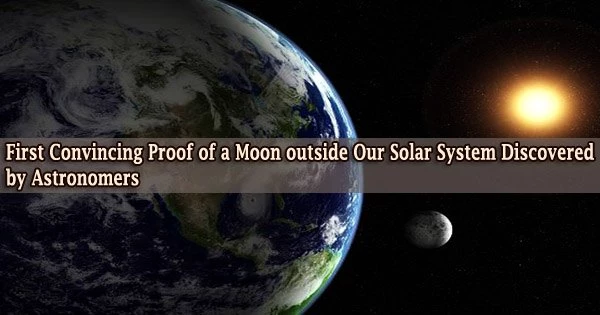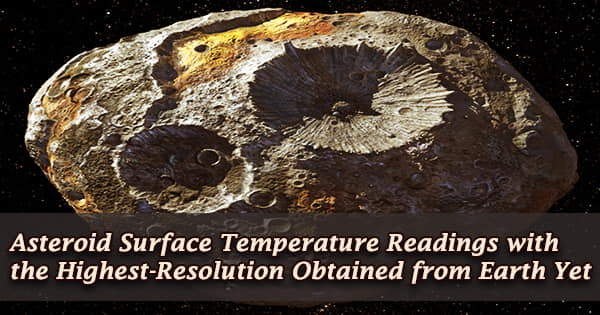With the aid of NASA’s Hubble and Kepler space telescopes, two astronomers from Columbia University have compiled convincing proof of the presence of a moon orbiting a gas-giant planet 8,000 light-years away.
According to Alex Teachey and David Kipping’s research, which was published on October 3 in the journal Science Advances, the discovery of a potential exomoon that is, a moon orbiting a planet in another star system is exceptional due to its massive size, which is comparable to Neptune’s diameter. In our own solar system, where approximately 200 natural satellites have been catalogued, such enormous moons do not exist.
“This would be the first case of detecting a moon outside our solar system,” said Kipping, an assistant professor of astronomy at Columbia.
“If confirmed by follow-up Hubble observations, the finding could provide vital clues about the development of planetary systems and may cause experts to revisit theories of how moons form around planets.”
The researchers examined data from 284 planets found by Kepler that were in relatively broad orbits around their host stars and had periods longer than 30 days in their quest for exomoons.
The measurements tracked the transit, or temporary dimming of brightness caused by a planet crossing in front of its star. In Kepler 1625b, the astronomers discovered one case with fascinating peculiarities.
“We saw little deviations and wobbles in the light curve that caught our attention,” Kipping said.
A companion moon is the simplest and most natural explanation for the second dip in the light curve and the orbit-timing deviation. It was a shocking moment to see that light curve, my heart started beating a little faster and I just kept looking at that signature. But we knew our job was to keep a level head testing every conceivable way in which the data could be tricking us until we were left with no other explanation.
Alex Teachey
The scientists used 40 hours of Hubble time to analyze the planet in depth using the Kepler results, which allowed them to gather data that was four times more accurate than Kepler’s. The planet was observed before and throughout its 19-hour transit across the face of the star by the researchers.
After it was over, 3.5 hours later Hubble noticed a second, much smaller reduction in the star’s brightness, which was compatible with “a moon trailing the planet like a dog following its owner on a leash.” Kipping said. “Unfortunately, the scheduled Hubble observations ended before the complete transit of the moon could be measured.”
In addition to this decrease in brightness, Hubble’s measurements showed that the planet’s transit started 1.25 hours sooner than expected, validating the moon idea. This is in line with the idea that the planet and moon orbit a shared gravitational pole, or barycenter, which would cause the planet to veer from its expected position.
“An extraterrestrial civilization watching the Earth and Moon transit the Sun would note similar anomalies in the timing of Earth’s transit,” Kipping said.
Although Kepler did not discover any other planets throughout its four-year mission, the researchers remark that this anomaly may theoretically be caused by the gravitational attraction of a second planet in the system.
“A companion moon is the simplest and most natural explanation for the second dip in the light curve and the orbit-timing deviation,” said lead author Teachey, NSF Graduate Fellow in astronomy at Columbia.
“It was a shocking moment to see that light curve, my heart started beating a little faster and I just kept looking at that signature. But we knew our job was to keep a level head testing every conceivable way in which the data could be tricking us until we were left with no other explanation.”
The moon only makes up around 1.5% of the partner planet, which is thought to weigh many times as much as Jupiter. The mass ratio between the Earth and its moon is fairly close to this figure.
The largest of the five known natural satellites of the dwarf planet Pluto, however, is thought to have formed as a result of an early collision with a larger body in the Pluto-Charon system and the Earth-Moon system. However, Kepler 1625b and its satellite are gaseous, not stony, therefore a collision like this might not result in the condensation of a satellite.
Exomoons are challenging to locate because they are smaller than their companion planet, which makes their transit signal weak, and because the moon is orbiting the planet, which causes it to change location with each transit.
The best candidates for moon-hosting planets also have huge orbits and long, irregular transit durations. The Neptune-sized moon would have been among the first objects in this search that would have been simplest to identify because to its size.
The host planet and its moon are located in the habitable region of the solar mass star (Kepler 1625), where mild temperatures allow liquid water to exist on any solid planetary surface.
“Both bodies, however, are considered to be gaseous and therefore unsuitable for life as we know it,” Kipping said.
Jupiter-sized planets that are further distant from their star than the Sun is from the Earth will be the focus of next searches. Only a few of these can be found in the Kepler database.
NASA’s upcoming James Webb Space Telescope could really “clean-up” in the satellite search, Kipping said. “We can expect to see really tiny moons.”
















